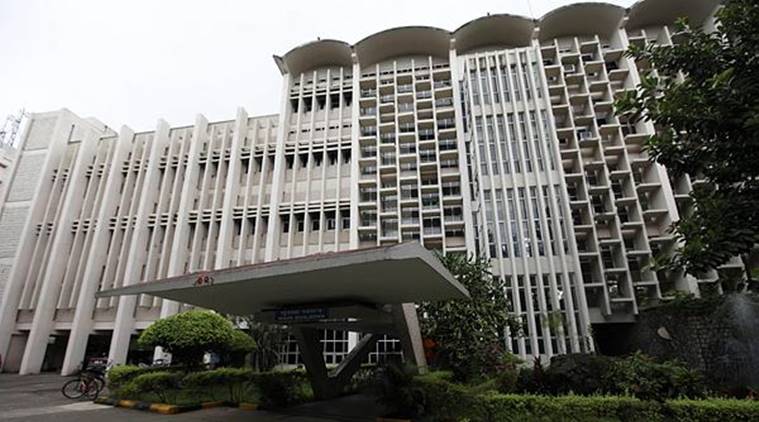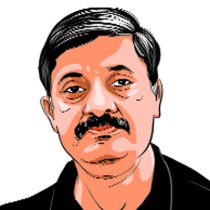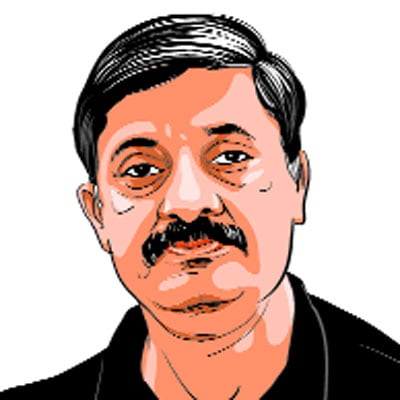The unshackling
Institution of Eminence tag frees universities from government interference

IIT Bombay received the Institution of Eminence (IoE) status
Few people realise how momentous the Institution of Eminence decision of the government is. Six lucky institutions have been given the freedom to educate as they deem fit, in the best interest of their students, using the full potential of their faculty without the incubus of governmental control on their backs. Three of the government universities will even get additional funds to pursue their dreams.
Rid of the burden of carrying out the orders of the government, these six universities can fully focus on their students, faculty, research and social outreach to prove that they are among the best in the world. The decision is so outside the norm for Indian academia that it has left Indian academics shocked.
Come to think of it, the Narendra Modi government has been taking small steps towards liberating universities and colleges from the bonds that were forged by the colonial government in the 1850s, with the ubiquitous Director of Public Instruction in-charge. In March 2018, some 60 universities and colleges were given considerable autonomy to decide on their courses, hiring of faculty, fee structure and raising of philanthropic funds. It took considerable persuasion from the government, and assurances of goodwill, to persuade these universities and colleges to accept their autonomous status. Such is the response of enslaved minds to an invitation to freedom.
A little-noticed fact about India is that even after liberalisation set in in the 1990s, there was no liberation of higher education from government control. People complained about the lack of autonomy and bureaucratic interference, forgetting that this was not the result of the government’s interference but of diktats from fellow academics who ran controlling bodies like the University Grants Commission (UGC). And there were some 17 such bodies controlling each and every realm of higher education.
Such control was taken so much for granted that even while the government went about liberating the Indian economy from control in the 1990s, no one even thought of liberating higher education. Everyone merely lamented the decline of higher education in India. So much so that eventually, even the universities began to disbelieve their degrees. Having a degree ceased to be of value. Anyone who wished to move up a step in education needed to clear an independent entrance exam to that level.
One of the little-noticed foul consequences of tying down higher education was that as Indians grew richer in the 2000s, they discovered that their country was incapable of producing many things they desired. No cell phones, for example, were produced in India. Neither were aircraft. Indians were even incapable of producing cheaply things that they knew how to produce: The ubiquitous Ganesha statues were cheaper when imported from China than when India produced. Even in the production of the humble bicycle we were not able to match up in quality and price to Chinese imports. We could export iron ore but did not have the knowledge to convert it into high-quality steel at cheap enough rates. Unfortunately, the list of imports of items that we could possibly produce but do not have the knowledge and organisational skills to produce cheaply also includes things on which the Indian economy depends and without which it would collapse. Like solar panels, robots, blast furnaces, hot steel rolling mills etc.
For a country that has seen conflict for most of its modern existence, it was also amazing that we could not produce the necessary defence equipment without which we would feel insecure. Half of India’s students were pursuing courses in the liberal arts and sciences. But they lacked the ability to scientifically analyse Indian society. Here, we depended heavily on research done by scholars based in western universities. Research of our own researchers from the arts, humanities and social sciences mostly remained unused because it was, by and large, thin.
The great wonder is that despite being shackled by so many bonds, many Indian universities and colleges produced a few high achieving individuals. How much of their achievements were their own doing and how much the result of value added by the university in which they studied remains a matter of speculation.
Under the circumstances, the bold step taken by the government to grant swaraj to universities is most welcome. The next step of this swaraj would be for the universities to connect more strongly with Indian people and persuade the philanthropically minded among them to donate monies for running the university, set up endowments to fund academia.
The writer is professor, contemporary history, Panjab University, Chandigarh
For all the latest Opinion News, download Indian Express App
More From M. Rajivlochan
- Eureka Moment For UniversitiesGraded autonomy to higher education bodies should spur investment in human capital...
- Unhealthy BinariesIndia’s healthcare needs monitoring systems, not public vs private sector debate...
- Once Upon A BattleAt that time, Koregaon was a battle both sides thought they had not won ..







































No hay comentarios:
Publicar un comentario